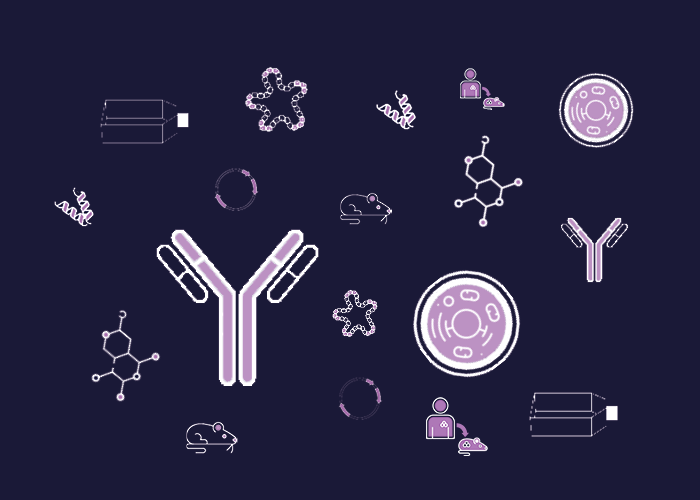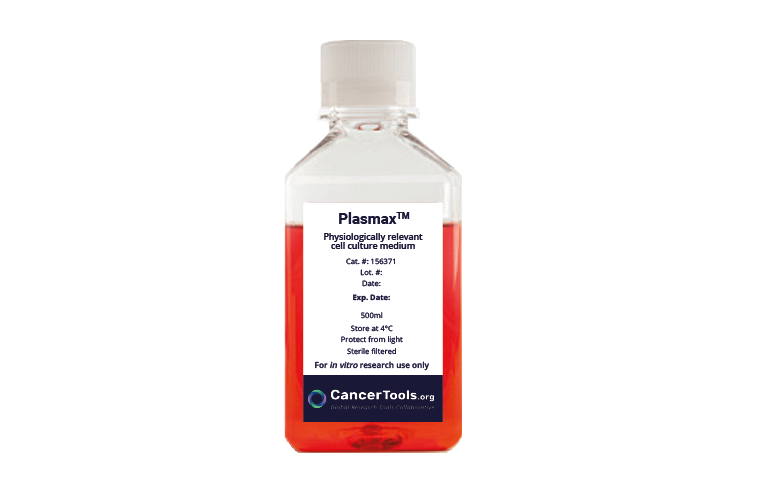Cat. #152110
T47D/TR-2 Cell Line
Cat. #: 152110
Sub-type: Continuous
Unit size: 1x10^6 cells / vial
Availability: 8-10 weeks
Organism: Human
Tissue: Breast
Disease: Cancer
Model: Cancer cell line
£575.00
This fee is applicable only for non-profit organisations. If you are a for-profit organisation or a researcher working on commercially-sponsored academic research, you will need to contact our licensing team for a commercial use license.
Contributor
Inventor: Anne Lykkesfeldt
Institute: Danish Cancer Society, Denmark
Primary Citation: Kirkegaard et al. 2014. Cancer Lett. 344(1):90-100. PMID: 24513268.
Tool Details
*FOR RESEARCH USE ONLY (for other uses, please contact the licensing team)
- Name: T47D/TR-2 Cell Line
- Cancers detailed: Breast carcinoma;Tamoxifen resistant
- Research fields: Cancer;Drug development
- Tool sub type: Continuous
- Parental cell: T47D/S2
- Organism: Human
- Gender: Female
- Tissue: Breast
- Donor: Female, Caucasian, 54Y
- Disease: Cancer
- Growth properties: Adherent
- Model: Cancer cell line
- Conditional: Yes
- Description: The T47D/TR-2 cell line is a tamoxifen-resistant derivative of the T47D human breast cancer cell line. It was established, alongside its sister line T47D/TR-1, by adapting T47D/S2 cells to 1 μM tamoxifen under reduced serum conditions (2% FCS), resulting in stable resistance to tamoxifen. T47D/TR-2 retains expression of estrogen receptor alpha (ERα) and progesterone receptor (PR) and proliferates in the presence of tamoxifen. Morphologically, the cells display a polygonal epithelial phenotype and remain adherent in culture. Together with T47D/TR-1, this cell line provides a valuable model system for investigating the heterogeneity of tamoxifen resistance in hormone receptor-positive breast cancer, enabling the discovery of mechanisms driving resistance and the development of strategies to overcome it.
- Application: Determining molecular mechanisms around tamoxifen resistance
- Production details: Human breast cancer cell line derived from T47D/S2 cells by long-term culture in the presence of 1 μM tamoxifen under reduced serum conditions to induce tamoxifen resistance. Clonal selection was performed in medium without tamoxifen. After 10 months in the presence of tamoxifen, the growth rate of the resistant cell lines had increased to a similar level as the parental cell line.
- Biosafety level: 1
- Cellosaurus id: CVCL_1D37
Target Details
- Target: Oestrogen receptor
Applications
- Application: Determining molecular mechanisms around tamoxifen resistance
- Application notes: The T47D/TR-2 cell line is a breast cancer cell line resistant to tamoxifen. This cell line has been established from T47D/S2 cells. T47D/TR-2 is adherent and the morphology is polygonal epithelial. T47D/TR-2 cells oestrogen receptor (alpha) positive and express progesterone receptor, although at a reduced level compared to parental T7D/S2 cells. Antioestrogen resistance is a major problem in breast cancer treatment. Therefore, the search for new therapeutic targets and biomarkers for antiestrogen resistance is crucial. This cell line allows the study of the mechanisms involved in tamoxifen resistant breast cancer cell growth.
Handling
- Format: Frozen
- Passage number: Passage 164 (AL3575, AL3576)
- Growth medium: Phenol red free RPMI 1640 + 2% FCS + glutamax + 8ug Insulin/ml + 1 uM tamoxifen. Fetal Calf Serum (FCS) typically contains less estrogen than Fetal Bovine Serum (FBS) and is the preferred supplement for this cell line.
- Temperature: 37° C
- Atmosphere: 5% CO2
- Unit size: 1x10^6 cells / vial
- Shipping conditions: Dry ice
- Storage medium: 10% DMSO in FCS
- Storage conditions: Liquid Nitrogen
- Subculture routine: Following thawing and counting, dilute the cell suspension with sufficient medium and distribute 5 mL each into T25 flasks to achieve a seeding density of 1.8 - 2.0 x 10^4 / cm2. Place in 37°C, 5% CO₂ incubator. Change medium after 24 hours to remove residual DMSO and then every 2-3 days. Subculture routine: Split 1:7 weekly (slow growing cell line) with Trypsin-EDTA for detachment at 37 °C for 5 minutes. Please also see detailed protocol within the Product Datasheet in the Documentation section below.
- Mycoplasma free: Yes
Related Tools
- Related tools: T47D/S2 Cell Line
References
- Larsen et al. 2015. PLoS One. 10(2):e0118346. PMID: 25706943.
- Larsen et al. 2015. BMC Cancer. 15(1):1-15. PMID: 25885472.
- Thrane et al. 2014. Oncogene. 34(32): 4199-4210. PMID: 25362855.
- Kirkegaard et al. 2014. Cancer Lett. 344(1):90-100. PMID: 24513268.






